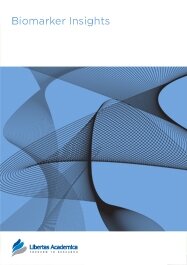

Publication Date: 04 Apr 2013
Type: Original Research
Journal: Biomarker Insights
Citation: Biomarker Insights 2013:8 35-41
doi: 10.4137/BMI.S11270

Background: Autism spectrum disorders (ASDs), characterized by impaired social interactions and deficits in verbal and nonverbal communication, are thought to affect 1 in 88 children in the United States. There is much support for the role of growth factors in the etiology of autism. Recent research has shown that epithelial growth factor (EGF) is decreased in young autistic children (2–4 years of age). This study was designed to determine plasma levels of EGF in an older group of autistic children (mean age 10.6 years) and to correlate these EGF levels with putative biomarkers HGF, uPA, uPAR, GAD2, MPO GABA, and HMGB1, as well as symptom severity of 19 different symptoms.
Subjects and methods: Plasma from 38 autistic children, 11 children with pervasive developmental disorder (PDD-NOS) and 40 neurotypical, age and gender similar controls was assessed for EGF concentration using ELISAs. Severity of 19 symptoms (awareness, expressive language, receptive language, (conversational) pragmatic language, focus/attention, hyperactivity, impulsivity, perseveration, fine motor skills, gross motor skills, hypotonia (low muscle tone), tiptoeing, rocking/pacing, stimming, obsessions/fixations, eye contact, sound sensitivity, light sensitivity, and tactile sensitivity) was assessed and then compared to EGF concentrations.
Results: In this study, we found EGF levels in autistic children and those with PDD-NOS to be significantly lower when compared with neurotypical controls. EGF levels correlated with HMGB1 levels but not the other tested putative biomarkers, and EGF correlated negatively with hyperactivity, gross motor skills, and tiptoeing but not other symptoms.
Conclusions: These results suggest an association between decreased plasma EGF levels and selected symptom severity. We also found a strong correlation between plasma EGF and HMGB1, suggesting inflammation is associated with decreased EGF.
PDF (505.33 KB PDF FORMAT)
RIS citation (ENDNOTE, REFERENCE MANAGER, PROCITE, REFWORKS)
BibTex citation (BIBDESK, LATEX)
XML
PMC HTML

I would like to extend my gratitude for creating the next generation of a scientific journal -- the science journal of tomorrow. The entire process bespoke of exceptional efficiency, celerity, professionalism, competency, and service.
Facebook Google+ Twitter
Pinterest Tumblr YouTube